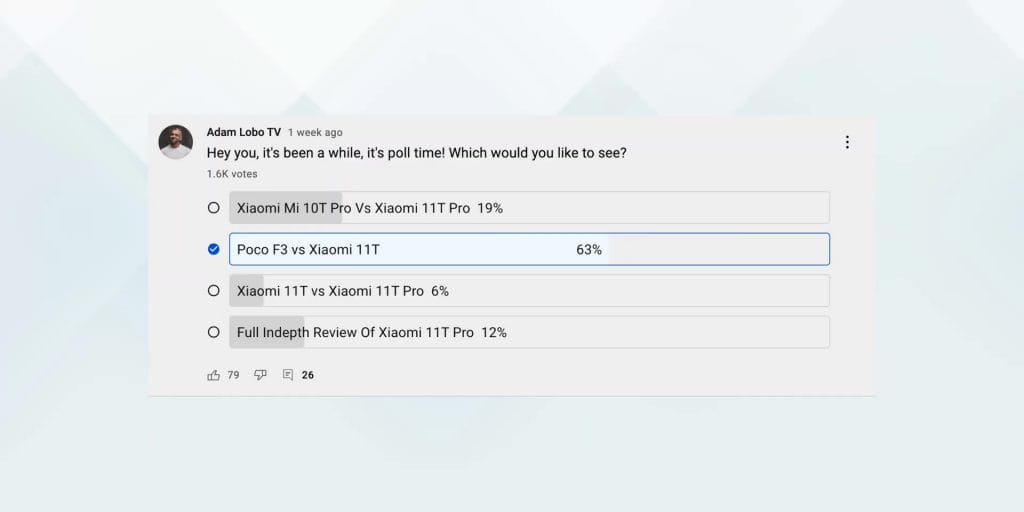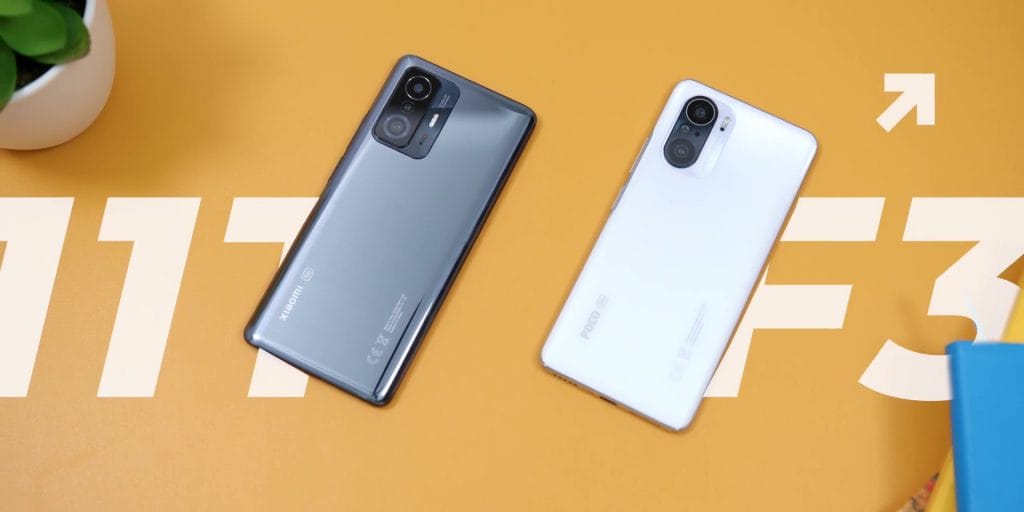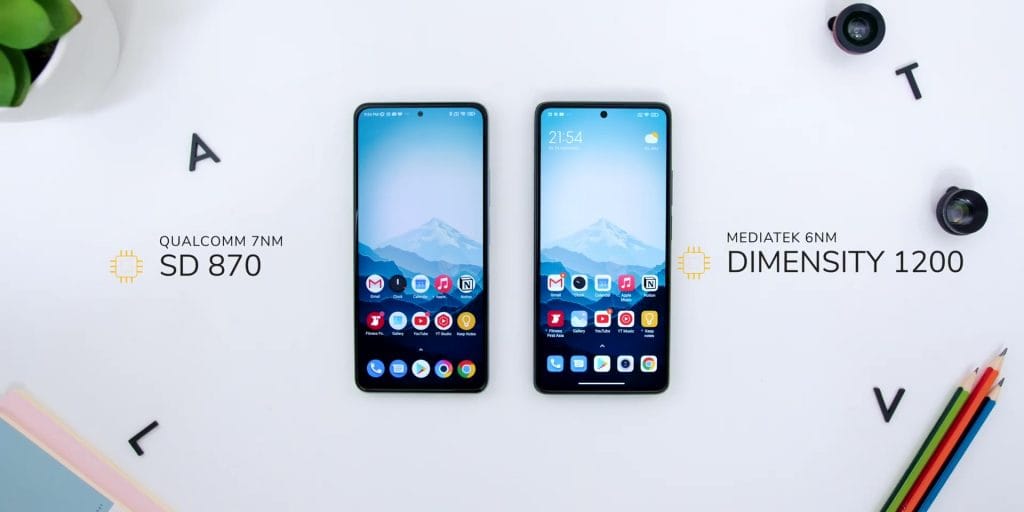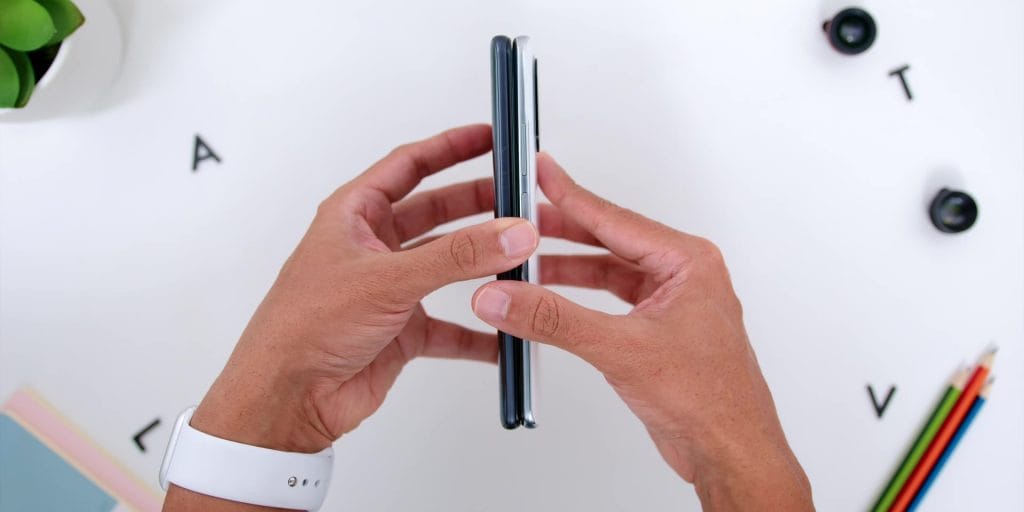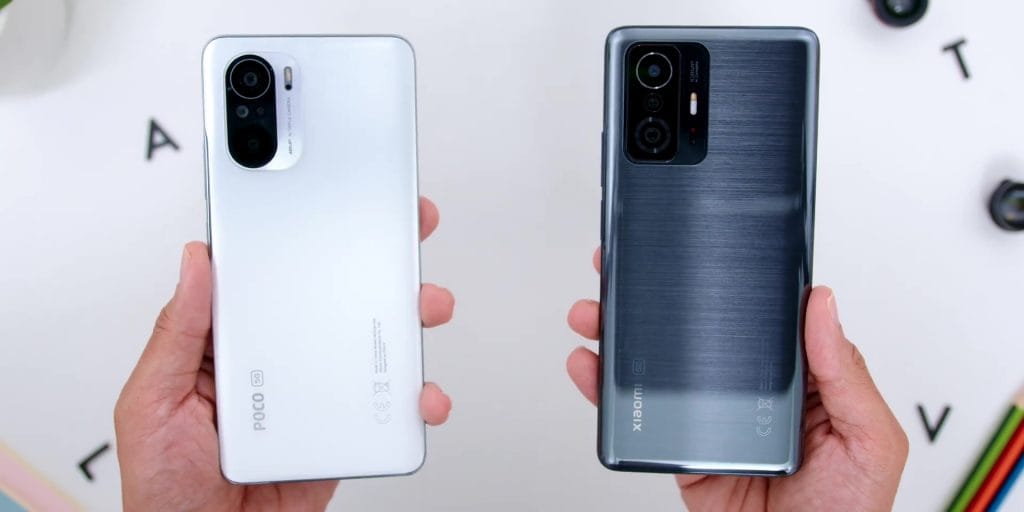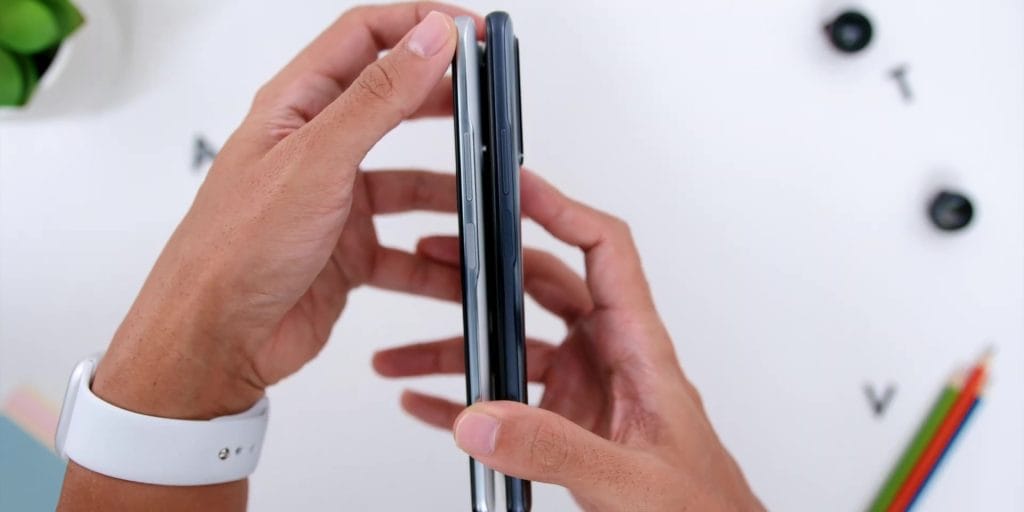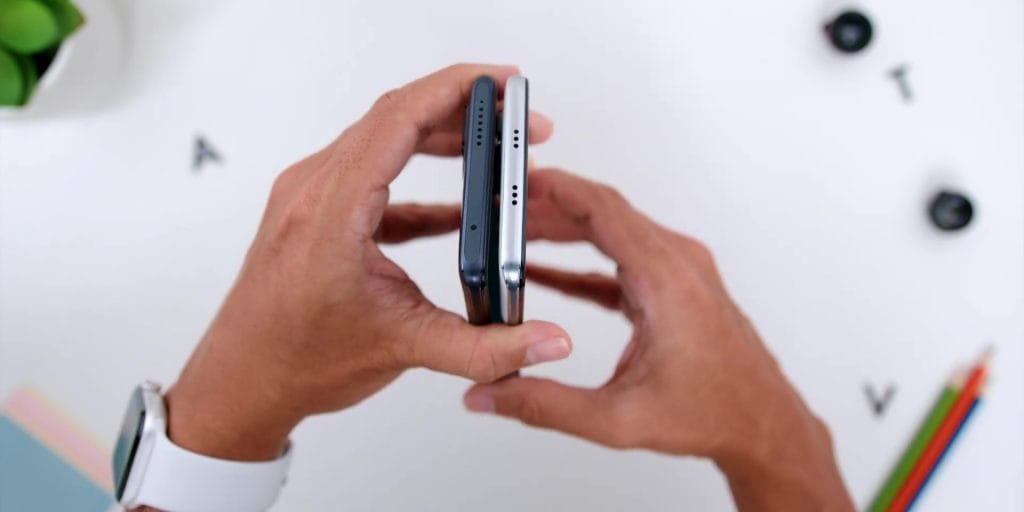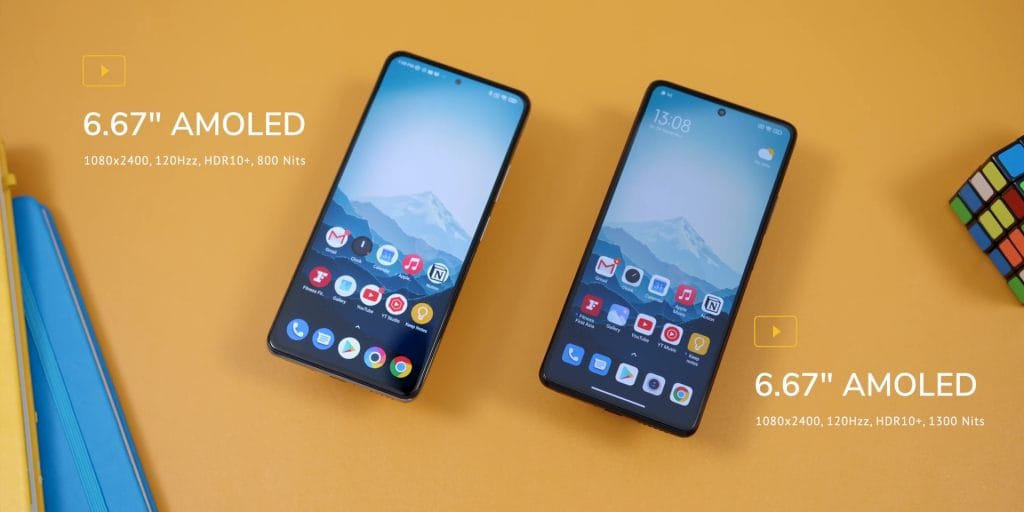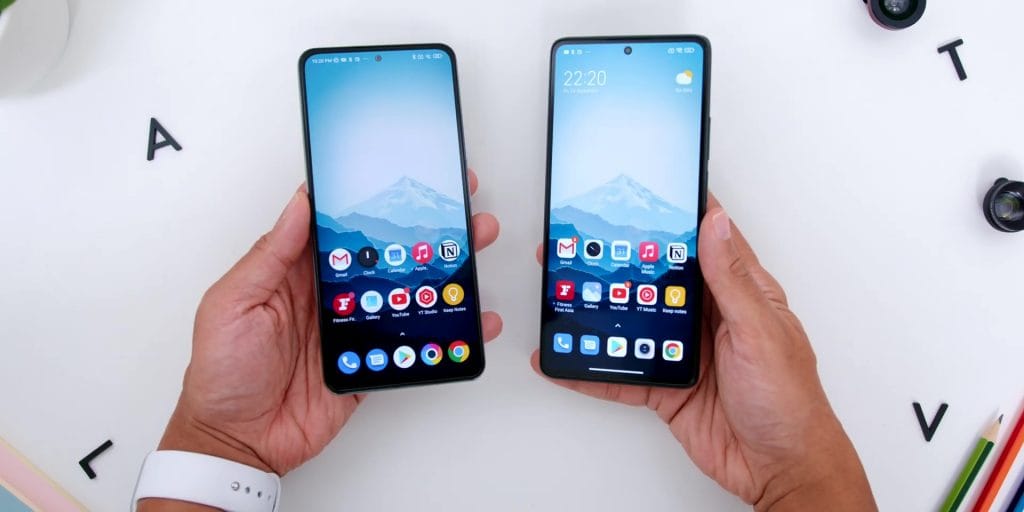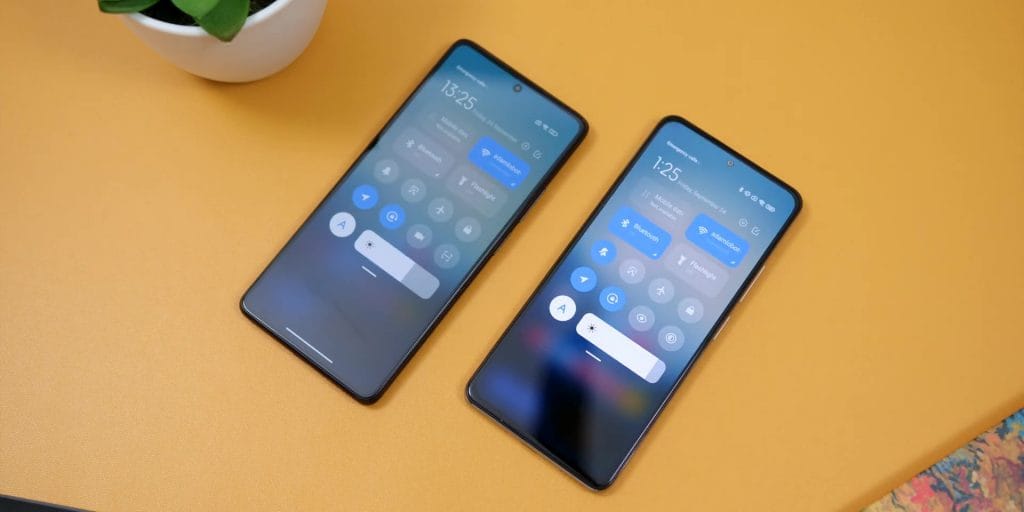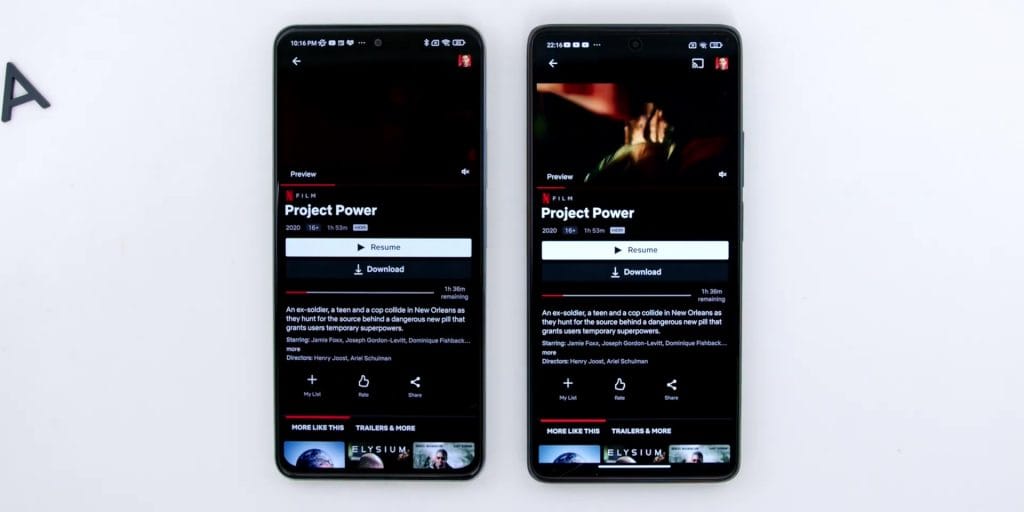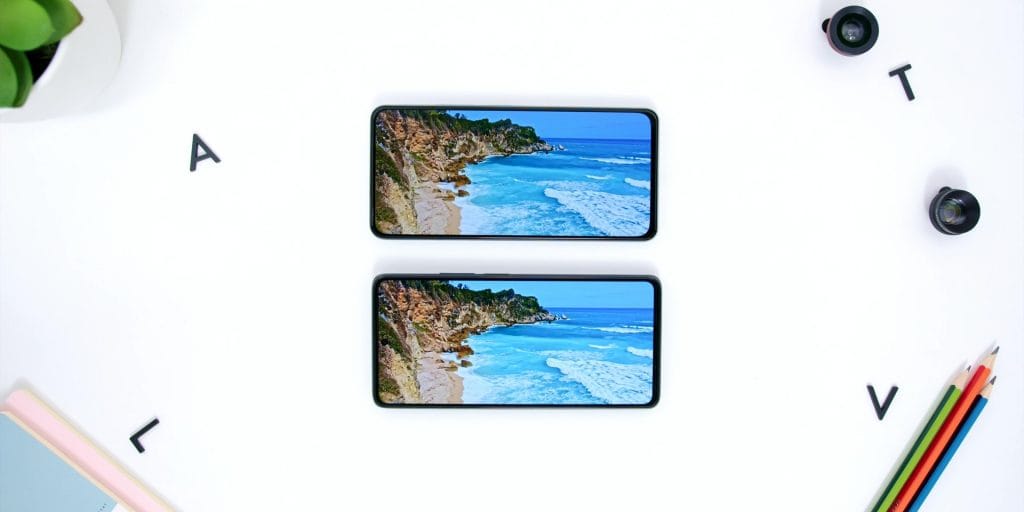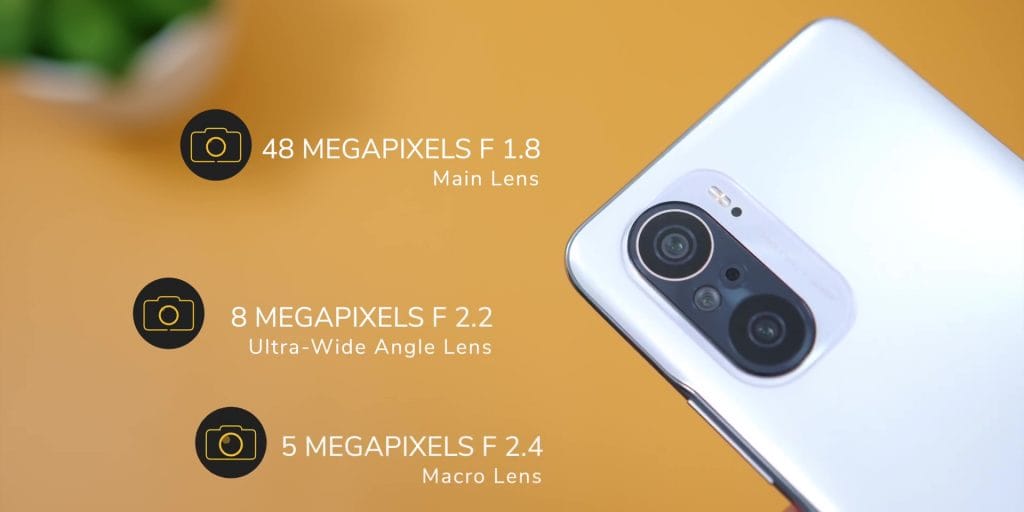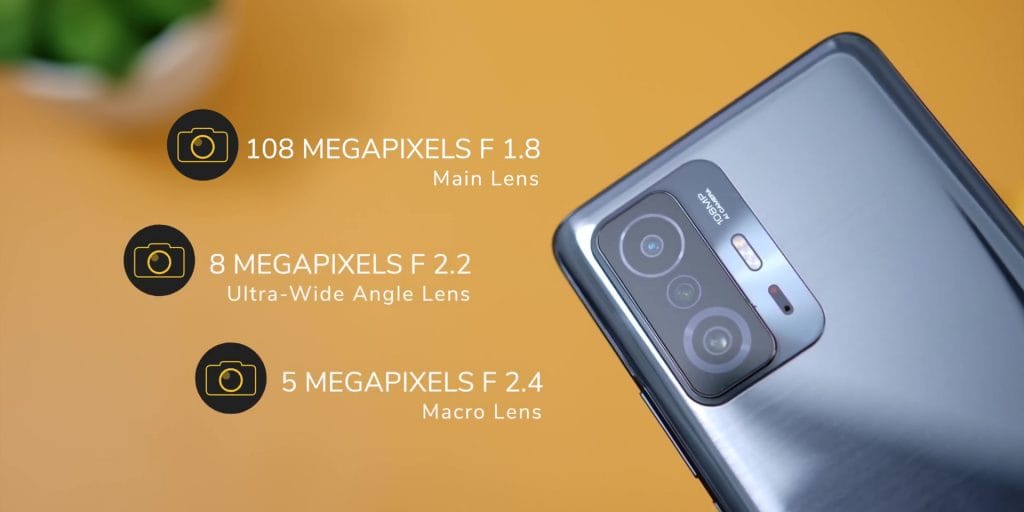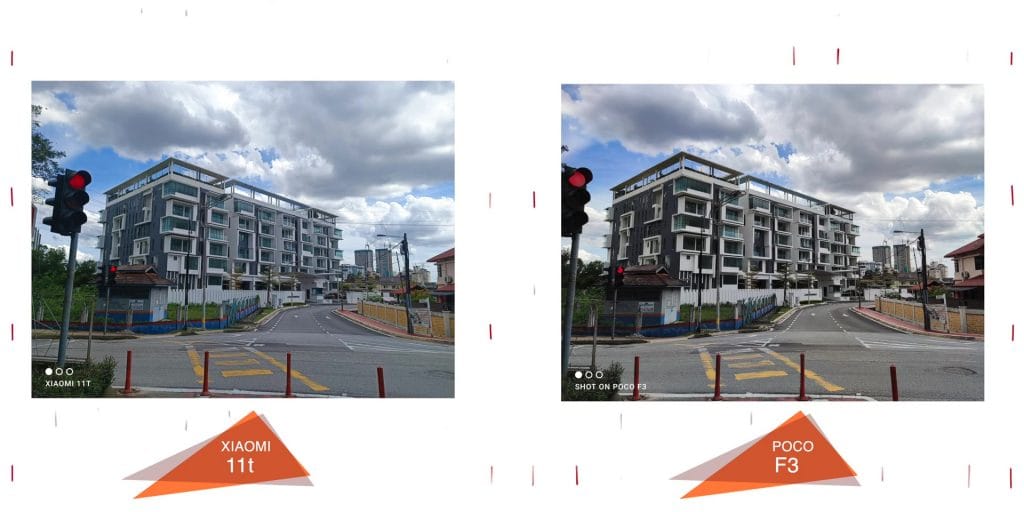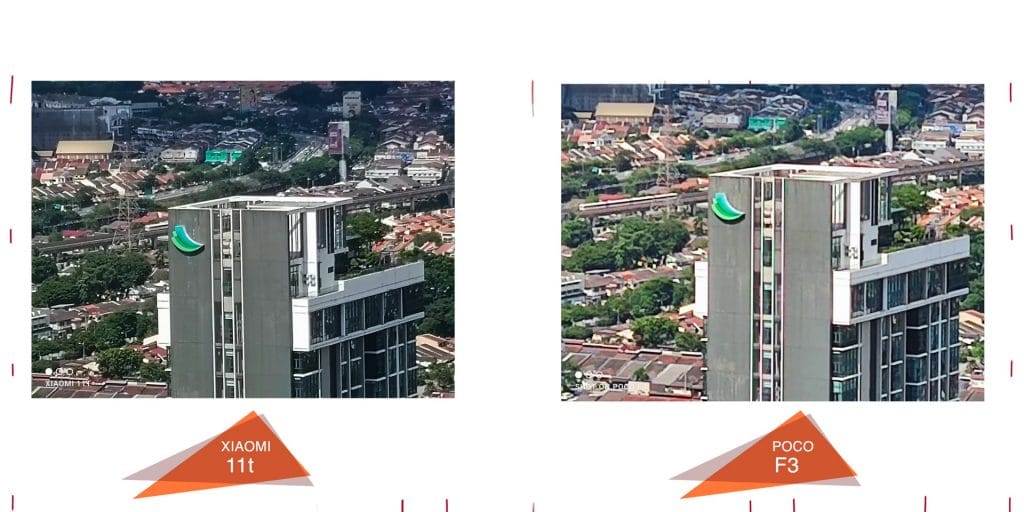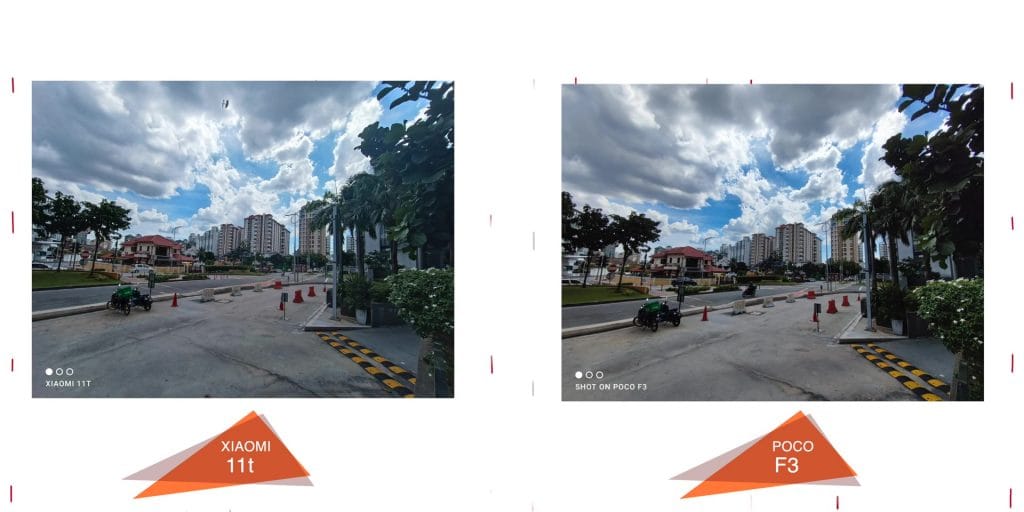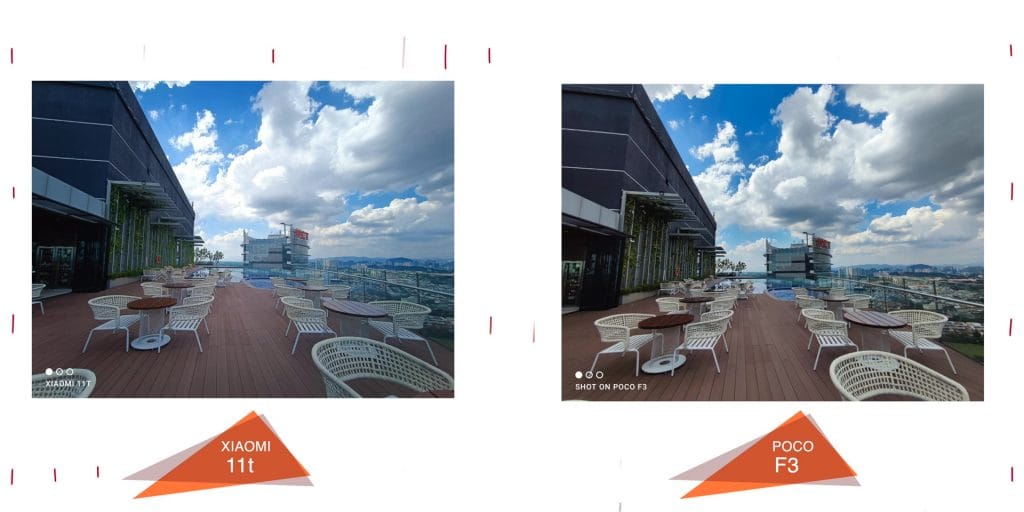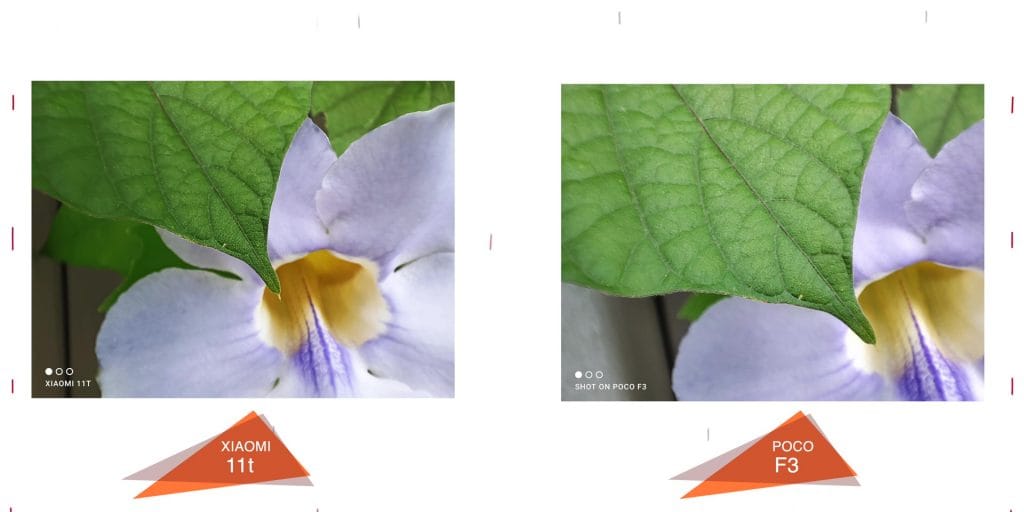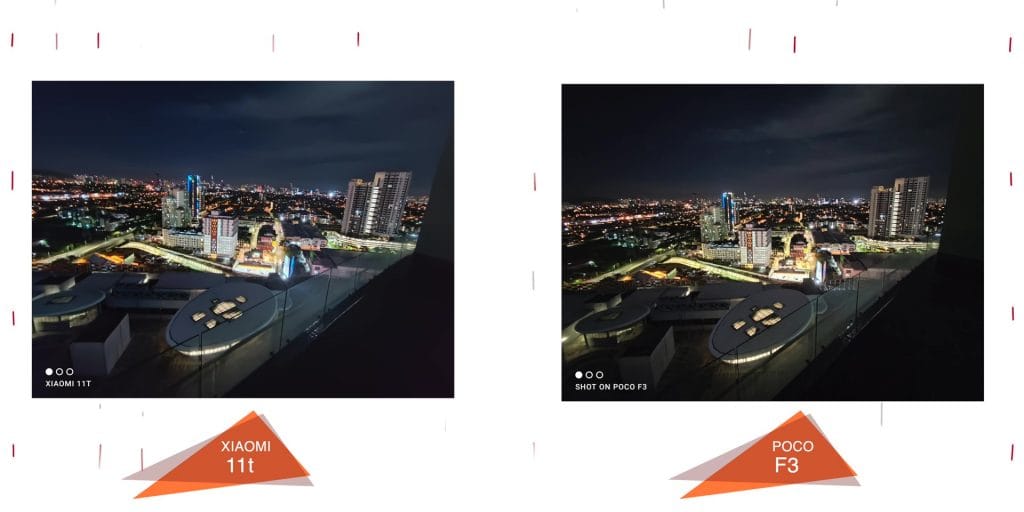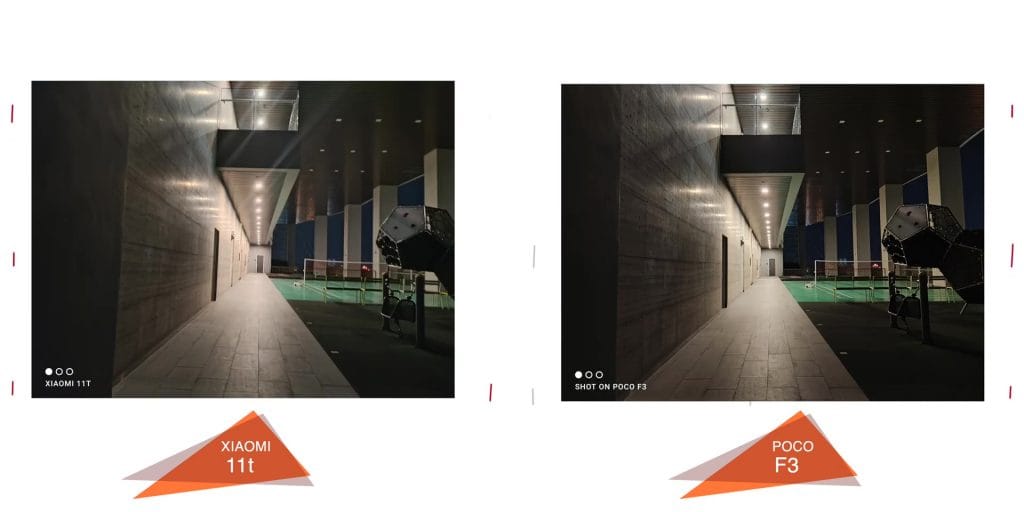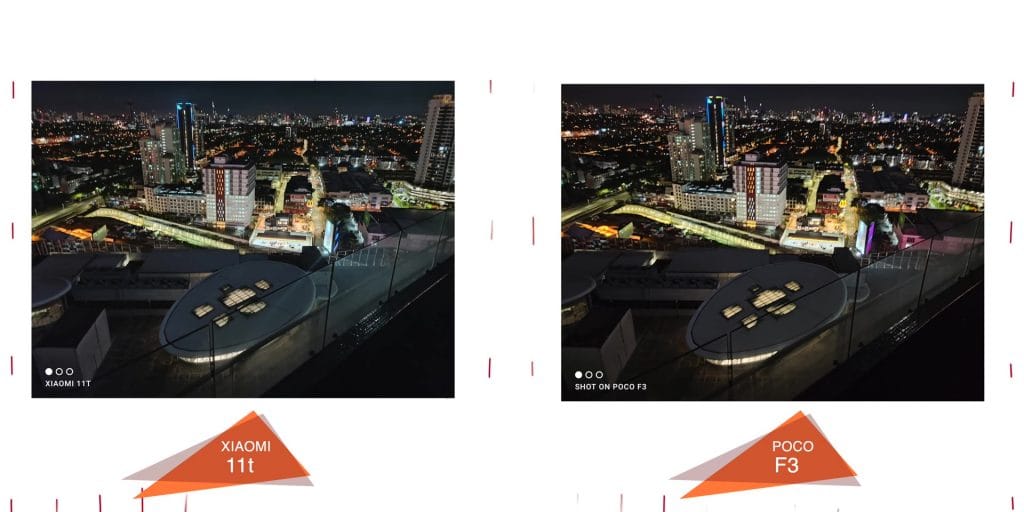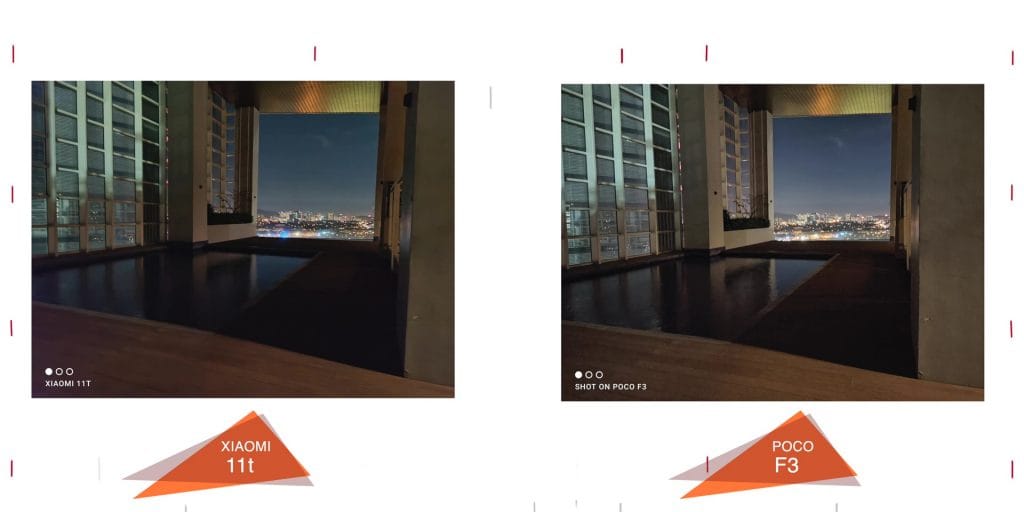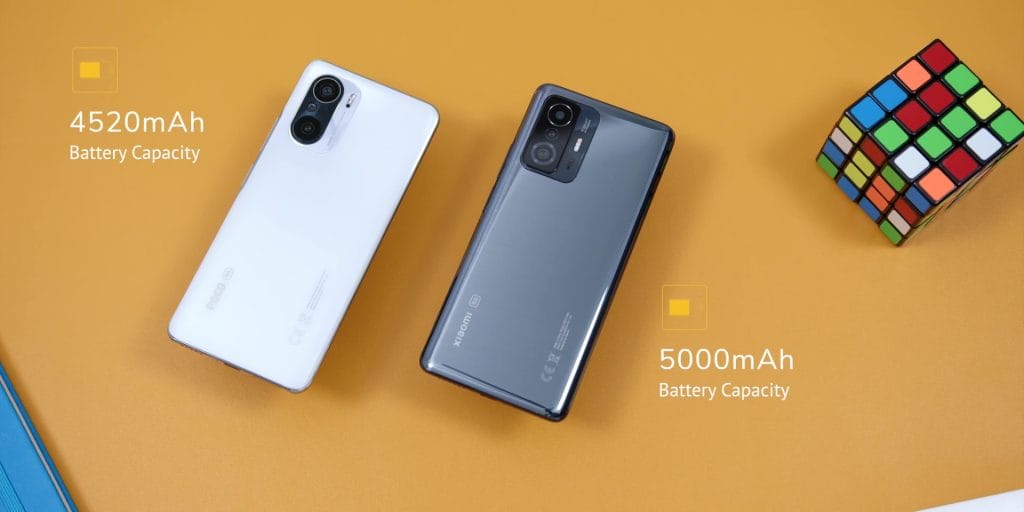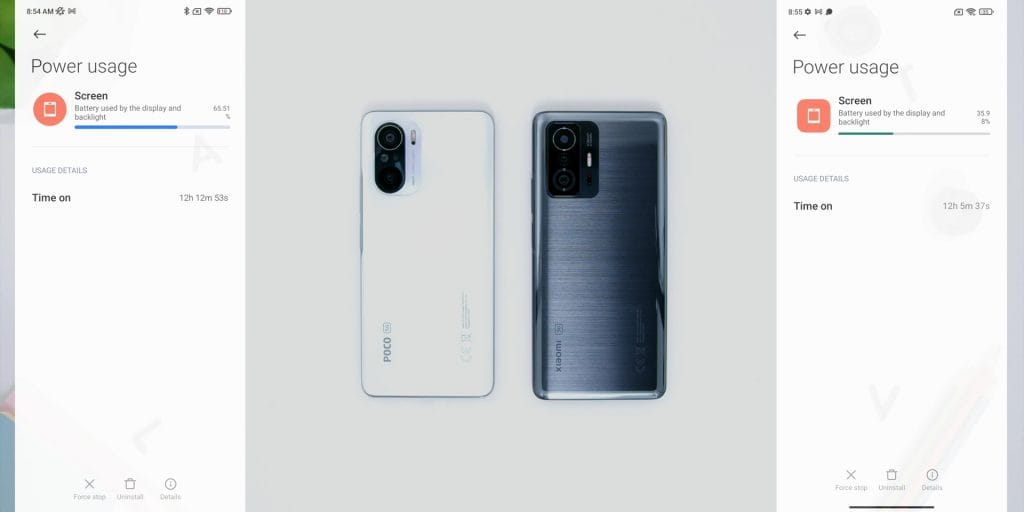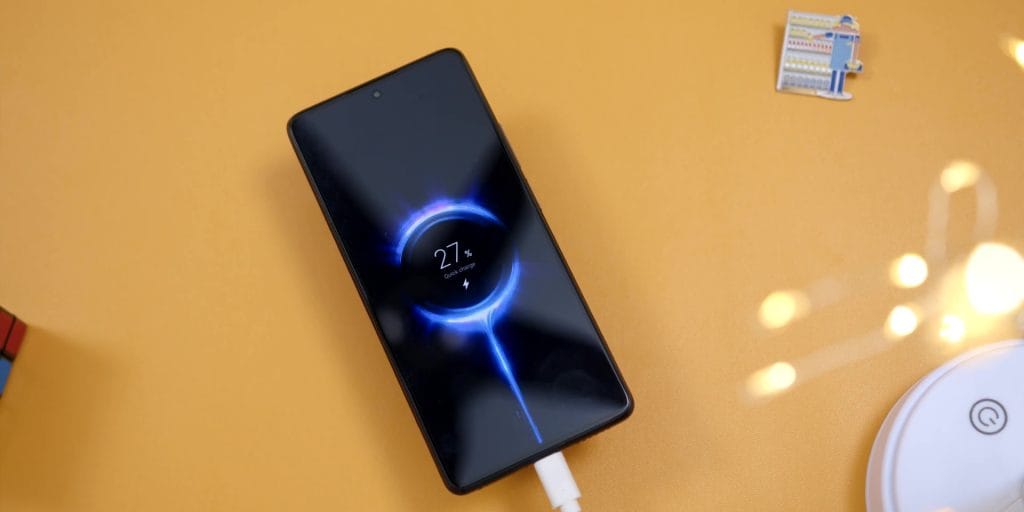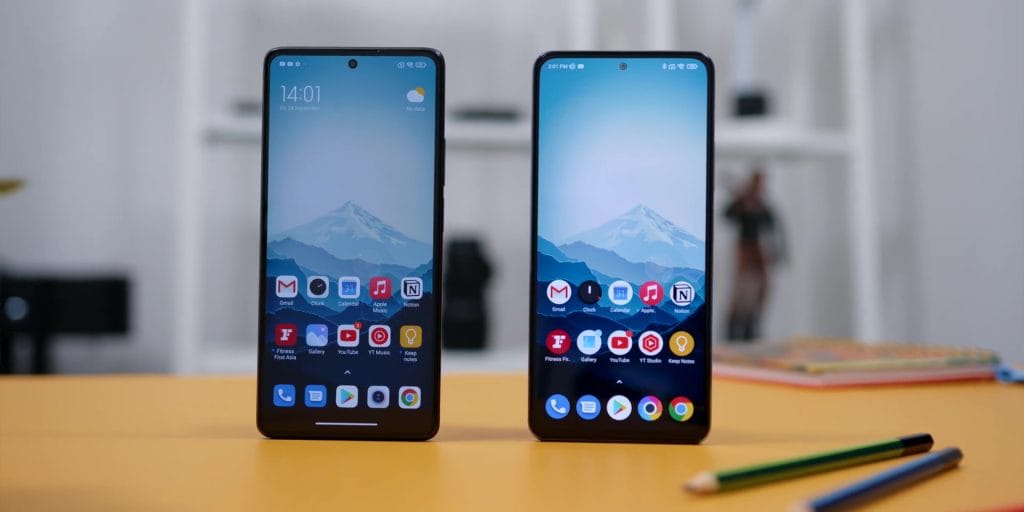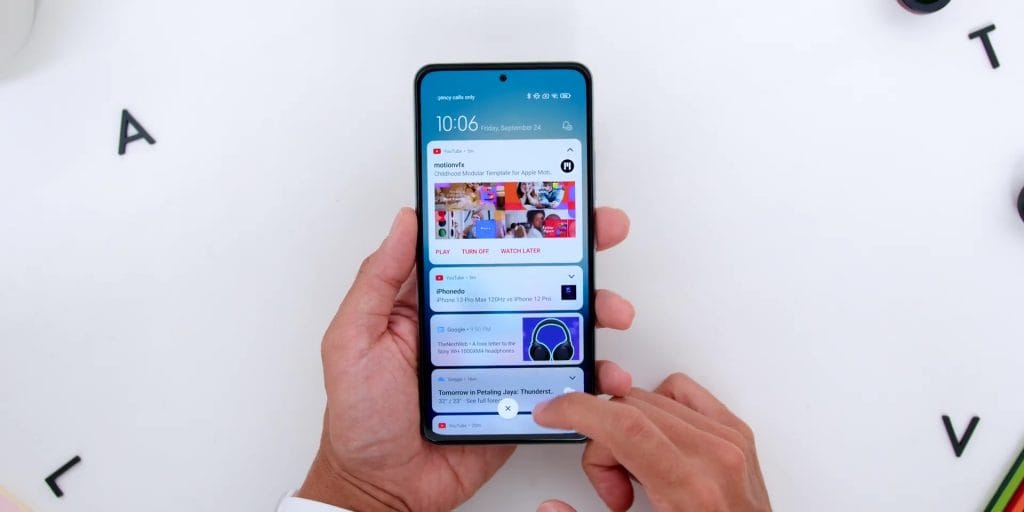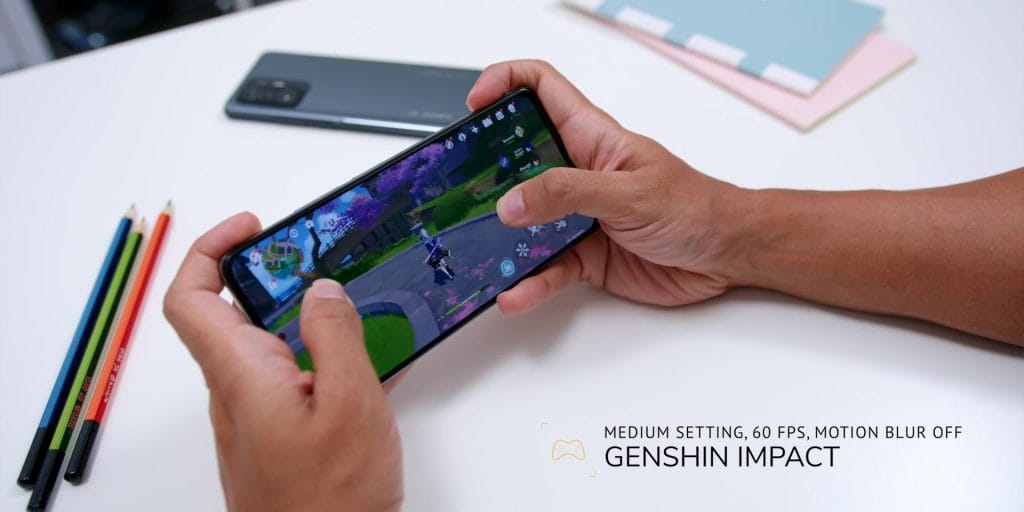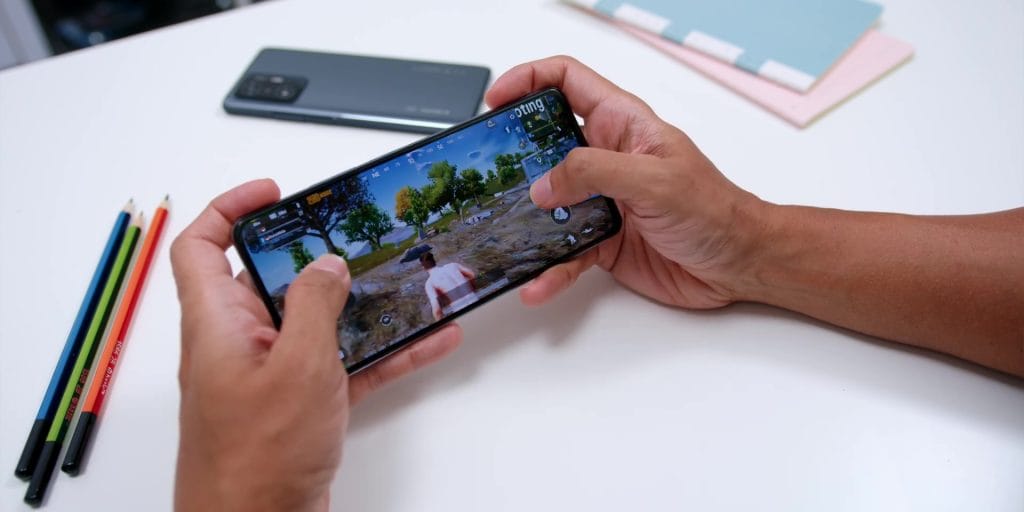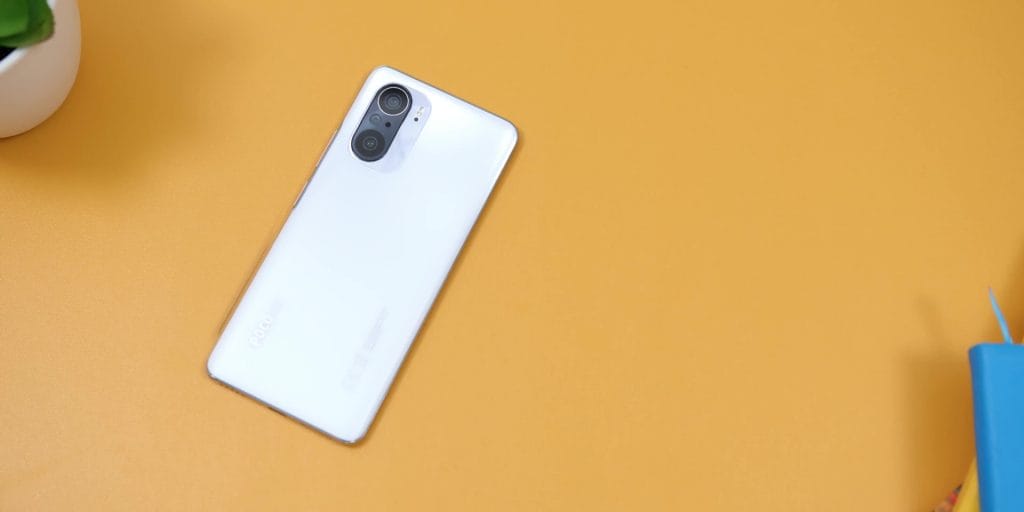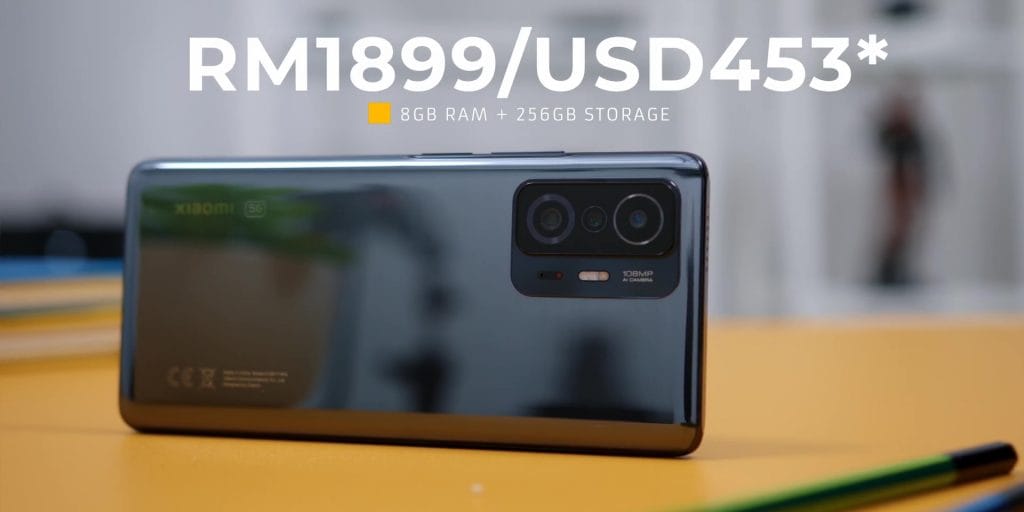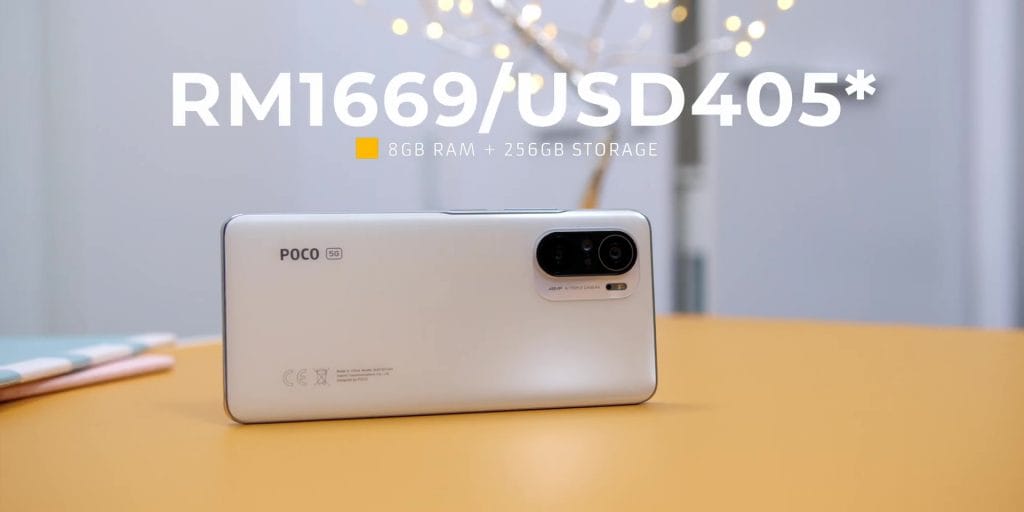So the time has come for me to do yet another smartphone comparison video, and this time around, I gave you a bunch of options on my YouTube Community Tab on the type of comparison videos to do, as doing this kind of videos are not as easy as just sitting in front of the camera and telling you which is better, because not only I need to test both phones at the same time properly but I will also need to show you the camera samples and battery test screenshots on which has better results.
And since out of all the options, you have requested for me to do a comparison video between the Poco F3 against the newly introduced Xiaomi 11T, here is my in-depth comparison to help you make a purchase decision.
Hardware
Starting from the phone’s hardware, in terms of the chipset, the Poco comes with the Snapdragon 870 chipset, a 7nm processor and the Xiaomi 11T comes with the Mediatek Dimensity 1200 chipset which is a 6nm processor, and yes, both phones are 5G phones.
Then when it comes to the phone’s build quality, both phones were the same size but the Xiaomi 11T was a bit thicker and also heavier due to the larger battery and also because the 11T has a better Corning Gorilla Glass Victus protection compared to only version 5 on the Poco F3.
Now like the previous comparison of the Poco X3 GT, it has a similar glossy glass back finish, which is down to a personal preference, so for me, I still not only prefer the amazing white finish on the Poco F3 but also the matte finish which totally doesn’t attract any smudges or fingerprints as well.
And because of this, the Poco F3 does feel better in the hands, and sort of “gels” into your hands, compared to carrying a slightly heavier and a thicker form factor of a smartphone.
In terms of the camera bump, due to the larger camera sensor on the Xiaomi 11T, you will find it bigger than the Poco F3, but because the camera bump is a bit more squared on the edges, the phone doesn’t wobble as much as the Poco F3 when typing it on a surface.
In terms of the ports and buttons, looking below, it was exactly the same, where both phones do not have micro SD card slots.
On the right, you will find the same placements for the volume rockers and the same tactile feeling side power and fingerprint sensor, and it is a real blessing that Xiaomi seems to put this kind of side fingerprint button compared to the concave ones on the Mi 10T Pro last year. And yes both unlocks really quickly, and there was no difference over here.
Looking on top, since both phones have stereo speakers, you will find the same additional speakers over here but just a little different arrangement for the speakers on the Poco F3, where the IR blaster on the Poco F3 is very close to the speakers, making it look like it was part of the speakers.
So overall if I REALLY had to choose between both phones, in terms of the design, build, and just using both phones daily, I’d go with the Poco F3.
Because while it’s nice to have a solid phone with the Corning Gorilla Glass Victus protection and all, I humbly feel that if Xiaomi wants to go “thick” they should probably go with a more squared-off design like the iPhones or the Oppo Reno 6 Pro series, as while it is thick but it does feel easier to grip and doesn’t make me have that sort of anxiety of the phone falling off from my hands.
Display
Now let’s look at the display. As mentioned, since both phones are the same size, it has a 6.67-inch display and the same resolution at 1080 x 2400 pixels.
Both phones have AMOLED screens at a 120-hertz refresh rate, where the Poco F3 uses Samsung’s E4 AMOLED panel and there was no official listing on what is the exact panel used for the 11T where some online research suggests that it is using the panel from the subsidiary company of TCL, so I will check back on that.
According to paper, the Poco has a way higher brightness value up to 1300 nits compared to 800 nits on the 11T, but just cranking up both phone’s brightness till max, to the naked eye it did seem almost the same on a normal lighting condition. But where you may say a difference is during bright daylight, but I wouldn’t say that the 11T was not visible as it still very much was.
The adaptive brightness on the 11T was just at the right brightness for me, where the Poco F3 seems to be a bit brighter than what I feel it needs to be at.
In terms of playback on Netflix, both have HDR playback support as seen in the content which has support for that and both phones have Widevine L1 rate and Full HD Playback Resolution.
But I did expect the 11T to have Dolby Vision because the Pro variant has that so it was equally as good as the Poco F3.
And since the display playback quality is about the same, you will expect very similar results when it comes to watching videos on Netflix, YouTube, and using the phone daily.
So with this I can guarantee that you would love both of the phones’ screens and I will give a draw when it comes to using it daily.
Camera
Next, on to the phone’s cameras. The Poco F3’s rear cameras comes with a 48-megapixel f 1.8 aperture lens, an 8-megapixel f 2.2 ultrawide lens, and a 5-megapixel f 2.4 macro lens.
Then as for 11T, it has a way bigger 108-megapixel f.18 aperture lens for the main, where the rest was the same camera arrays of the ultrawide and the macro lens.
But as for the front cameras, the Poco F3 has a bigger 20-megapixel f 2.5 aperture and the Xiaomi 11T has a 16-megapixel f 2.5 aperture lens.
So is the bigger rear camera main sensor on the 11T a better choice and is the Poco F3’s bigger megapixel front camera better than the 11T? Well, let’s find out!
High Megapixel Mode
Starting from the High Megapixel Mode, although on paper the Xiaomi 11T has a bigger megapixel count, as seen on these images, it looks practically identical, especially if you don’t crop or zoom in close, the only difference I would say is the color temperature, where it was cooler on the 11T and warmer on the Poco F3. But other than that, it’s pretty much the same.
Main Lens
Looking at the main lenses, while both images look very close to each other, you will see that the images on the Poco F3 have a deeper black and although in terms of the color accuracy of the images, the Poco F3 was more true to life, I kind of prefer how the images looked straight out of the cameras on the Xiaomi 11T on the main lenses.
Then looking at this second picture, once again both looked really good but if you really pixel peep the strand of clouds towards the middle left seems more pronounced on the 11T compared to the Poco F3 and this could be due to the bigger sensor.
Zoom
Speaking of the bigger sensor, both phones can zoom digitally up to 10 times, and because of the bigger sensor, you will get more details on the 11T once again.
Ultrawide Lens
For the ultrawide lens, I found that the image quality on the Poco F3 was better, as there were some contrast issues as seen at the leaves on the top right of the images, and the overall colors also seem to be a bit dull on the 11T as well.
Then this second image shows a similar contrast brightness and it even overexposed the cloud area in the middle compared to how the Poco F3, which had retained the dynamic range and detail over there.
Macro Mode
Looking at the Macro Mode shots then, both had easier focusing during this mode, which was great to know. On the 11T, it is called Super Macro Mode instead of just Macro Mode on the Poco F3.
Now, names aside, although the 11T seems to be getting an easier and closer shot, as you can see, there is some huge oversharpening done in post where the image on the Poco F3 was better, which had more balance on the overall image.
And as seen in this second image, it seems like there is so much oversharpening done on the center of the 11T compared to a nicer looking and detailed overall image on the Poco F3 once again.
Ultrawide (Night Mode)
As for the night mode on the ultrawide lens, personally, I didn’t like how both phones were not at best-taking low light photos, as it wasn’t easy to focus since both phones lacked OIS but if I really had to choose, I’d go with the Poco F3 since the skies were more true to life in black color, compared to a bluer color on the 11T.
And as for the next shot, of a bunch of downlights, you can see that there is lots of flare on the area of the light as opposed to how nicely detailed the picture was on the Poco F3.
Main Lens (Night Mode)
Then as for the main lens, both were almost the same, and the photos on the Poco F3 again were more color accurate on the skies for this image but it was sharper on the Xiaomi 11T.
Super low light
For super low light situations, here is where the 11T was better due to the larger sensor as the images on the Poco F3 had some artifacts around the pool area and some jagged edges around the floor as well.
Regular Selfie
As for the selfie shots, to be completely honest, I was not a fan of both of the pictures, as this has always been the biggest weakness for Xiaomi phones, even their flagships.
But when comparing both regular selfie photos, both the backgrounds are overexposed as there are no details in the sky area but the skin tones look better on the Poco F3.
The image quality for this second picture for the Mi11 looked very grainy on the blacks and once again the skin tones on the Poco F3 was better.
Portrait Selfie
Then as for the portrait selfie, both images failed on getting a good edge detection but there are better details on the skin for the Poco F3.
Video Recording
[Check out my YouTube video review for the test footages]
Then as for video recording, both phones maximize at 4k 30 frames per second for the rear.
The quality of the video was great and so was the image stabilization as well and the 11T records Dolby Audio recording.
Ultra-wide lens for video
Then the footage for the ultrawide lens for both phones maxes out at 1080p, where the video quality was just OK but great image stabilization.
Front Video Specs
As for the front video recording, both only record up to 1080p, where on the Poco F3 it goes up to 60 fps instead of only 30 fps on the 11T.
While image stabilization was equally as good but the video footage on the 11T just looks super horrible, as you can see compared to the Poco F3.
So, with this guys, let me know – Do you think the Poco F3 or the Xiaomi 11T performed better in every aspect of the cameras? Let me know in the comments section below.
Audio Quality
In terms of both of the phone’s speakers, both have stereo speakers, with the same placement.
In terms of the audio quality, both sounded very similar, on the highs and mids but the bass is better on the 11T.
But in terms of the maximum volume output, the Poco F3 goes up to 96.2 dB and the Xiaomi 11T goes to a value of 93.8 dB.
Battery
As for the battery specs, the Poco F3 comes with 4520 milliamps of battery and the Xiaomi 11T comes with a larger 5000 milliamps of battery.
And based on my usage daily, size does matter this time around because although there is a huge improvement on the screen on time on the Poco F3, but the Xiaomi 11T got a total of 12 hours and 5 minutes on screen on time when it was still at 35 percent battery, compared to 12 hours and 12 minutes on the Poco F3 when it was at only 10 percent battery.
And where the Xiaomi 11T wins is through its fast charging, where it supports up to a massive 67 watts compared to only 33 watts on the Poco F3.
So yes, this does come down to a personal preference on whether or not you need a better screen on time or faster charging.
Software
So the current software version that I was at during this review for the Poco F3 is at MIUI 12.5.3 whereas the Xiaomi 11T is at version 12.5.2, which for the life of me I can’t understand why, because the 11T is supposed to be newer.
Yes, the Poco has a “Poco” skin, but for a general user, they can’t even tell the difference.
While it is not my preferred Android skin, using both phones daily didn’t give any issues, being a person who has used a lot of MIUI devices in this channel, gone are the days where there are lots of issues, so that’s a good thing to know.
However I really, think that it’s about time that we got MIUI 13 already, rather than giving us tons of decimals at the back, so come on Xiaomi, either give a new UI or just revert to Stock Android eh?
But, with the promise of 3 Android OS Updates and 4 years of security patches, it does make the 11T a very considerable option.
Gaming
As for gaming, as usual, I started out with Genshin Impact on the Poco F3, and ever since the phone was on the latest update, there were improvements on the overall thermals when playing games for a long time.
The battery drain on the Poco F3 was only about 3 percent for about 10 minutes of heavy gaming.
Then as for the 11T, Genshin Impact also ran smoothly with no micro lag or battery drain issues like how the Poco X3 GT was, where the draining was very close to the Poco F3 as well, with the same 60 fps, at medium settings and motion blur turned off.
In terms of heat, the Xiaomi 11T did become as warm as the F3 but only about 20 minutes of gameplay or so, so it does run a tad bit cooler than the Poco F3.
As for playing PUBG Mobile, there were no issues at all for both phones, but the Poco F3 could go up to graphics at Ultra HD with frame rate set to Ultra and the Xiaomi 11T could maximise the graphics a one step lower at HDR, which apparently Ultra HD is not yet available, as it performs the same since the game is very well optimized for smartphones within this range.
But if I had to choose which is better for gaming, I would go with the Poco F3 due to the fact that it’s nicer to hold because of its form factor because the 11T did make my hands a bit stiff after playing games for a really long time since the phone is thicker as mentioned earlier.
And for some strange reason, the Poco F3 also felt a bit sharper during gameplay as well.
Conclusion
So in conclusion, I have to say that overall, I have to give it to the reigning Champion, the Poco F3 because although the battery life or charging speed is not its strongest feature, just using the phone daily, and the pictures coming out from the phone especially the front camera for the skin tones, makes this my choice compared to the Xiaomi 11T.
As for the phone’s price here in Malaysia, Xiaomi has JUST announced the price of the Xiaomi 11T, where it retails at RM1899 for the 8 gigabytes of RAM and 256 gigabytes storage variant
and the Poco F3 currently retails at RM1669 with the same amount of ram and storage and I will leave links below for you to get either one.
Alright, guys, so, I have made my choice, but I would love to know what you guys think and which smartphone would you go with, the Poco F3 or the new Xiaomi 11T, let me know in the comments section below.
Get the devices via the links below:-
Poco F3 : https://invol.co/cl6gqd6
Xiaomi 11T : https://invol.co/cl6gqds

